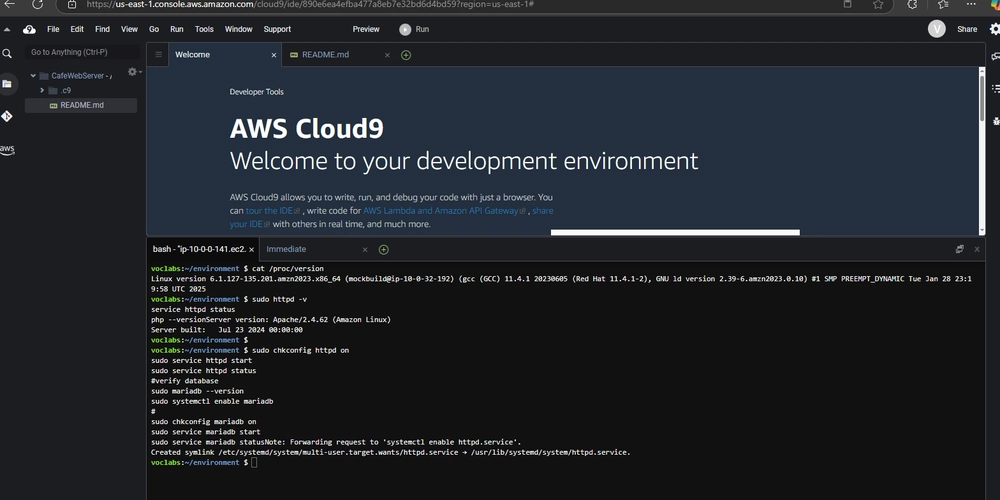Transform Your Data Model to AI Workflow - with only 8 extra lines of code!
"Good programmers worry about data structures and their relationships." - Linus Torvalds Introduction What if you could create complex AI workflows as easily as defining your data structures with Pydantic? What if you could simply harness the power of AI by allowing your Pydantic data models to flow like water? ModeLLM makes this possible by turning your Pydantic models into powerful AI pipeline components. Let's go over an example! The example Setup You will need to provide your own OPENAI_API_KEY (if you haven't already) export OPENAI_API_KEY="sk-..." You will also need to install the modellm library. pip install modellm All of the relevant dependencies are automatically installed with the modellm library. The code Take a look at this complete working example. from typing import List from pathlib import Path from pydantic import BaseModel from langchain_openai import ChatOpenAI from modellm import add_llm # Initialize the LLM (Language Model) we'll use for generating content llm = ChatOpenAI(model="gpt-4o-mini") # The @add_llm decorator connects the model to our LLM instance # This enables automatic content generation for the model's fields @add_llm(llm) class Story(BaseModel): title: str content: str genre: str # Please note that the docstrings will be used by LLM to # understand how to adapt the content # This is a powerful feature, # keeping the code easy to understand (For both humans and LLMs) @add_llm(llm) class StoryForBabies(Story): """ A story that is specifically tailored to be a baby's story. Appropriate for infants and toddlers aged 0-2 years old. Features: - Simple, repetitive language - Basic concepts - Short sentences - Sensory-rich descriptions """ # The class inherits all fields from Story pass @add_llm(llm) class StoryForTeenagers(Story): """ A story that is specifically tailored for teenage readers. Appropriate for young adults aged 13-19 years old. Features: - Complex character development - Engaging plot with relatable conflicts - Contemporary themes and social issues - Age-appropriate emotional depth - Exploration of identity and personal growth - Modern dialogue and realistic relationships """ pass # Same as with StoryForBabies @add_llm(llm) class HtmlModel(BaseModel): """ An HTML representation with beautiful CSS styling. """ html: str def main(): story_idea = "A story about farmer's struggle and perseverance" html_filepath = Path("story.html") # That's it. Only one line of code html_story = story_idea | Story | StoryForBabies | HtmlModel # Alternative pipeline for teenage audience # The | operator makes it easy to swap components in the pipeline # html_story = story_idea | Story | StoryForTeenagers | HtmlModel html_filepath.write_text(html_story.html) print(f"Story saved in HTML format to: {html_filepath.resolve()}") if __name__ == "__main__": main() Exercises To consolidate your knowledge: Execute the existing code on your computer Generate the story for teenagers (uncomment one line of code) Create a StorySummarized Pydantic model that should summarize the story Create your own Pydantic model and inject it to the pipeline Conclusion In this example, we've managed to harness the power of AI in (only!) 8 additional lines of code - thanks to the ModeLLM library Key benefits: Declarative Power: Define what you want, not how to get it (LLM is smart enough to catch the cue) Composable Pipelines: Chain transformations with the | operator (Makes our code easy to modify and extend) Self-Documenting: Docstrings guide the AI's behavior Flexible: Easily swap components Clean Interface: Complex AI operations hidden behind simple data models By defining our Pydantic data models (and decorating them) we were able to execute our AI pipeline with a single line of code: html_story = story_idea | Story | StoryForBabies | HtmlModel What do you think about this approach? I would love to hear your thoughts and suggestions.

"Good programmers worry about data structures and their relationships." - Linus Torvalds
Introduction
What if you could create complex AI workflows as easily as defining your data structures with Pydantic?
What if you could simply harness the power of AI by allowing your Pydantic data models to flow like water?
ModeLLM makes this possible by turning your Pydantic models into powerful AI pipeline components.
Let's go over an example!
The example
Setup
You will need to provide your own OPENAI_API_KEY (if you haven't already)
export OPENAI_API_KEY="sk-..."
You will also need to install the modellm library.
pip install modellm
All of the relevant dependencies are automatically installed
with the modellm library.
The code
Take a look at this complete working example.
from typing import List
from pathlib import Path
from pydantic import BaseModel
from langchain_openai import ChatOpenAI
from modellm import add_llm
# Initialize the LLM (Language Model) we'll use for generating content
llm = ChatOpenAI(model="gpt-4o-mini")
# The @add_llm decorator connects the model to our LLM instance
# This enables automatic content generation for the model's fields
@add_llm(llm)
class Story(BaseModel):
title: str
content: str
genre: str
# Please note that the docstrings will be used by LLM to
# understand how to adapt the content
# This is a powerful feature,
# keeping the code easy to understand (For both humans and LLMs)
@add_llm(llm)
class StoryForBabies(Story):
"""
A story that is specifically tailored to be a baby's story.
Appropriate for infants and toddlers aged 0-2 years old.
Features:
- Simple, repetitive language
- Basic concepts
- Short sentences
- Sensory-rich descriptions
"""
# The class inherits all fields from Story
pass
@add_llm(llm)
class StoryForTeenagers(Story):
"""
A story that is specifically tailored for teenage readers.
Appropriate for young adults aged 13-19 years old.
Features:
- Complex character development
- Engaging plot with relatable conflicts
- Contemporary themes and social issues
- Age-appropriate emotional depth
- Exploration of identity and personal growth
- Modern dialogue and realistic relationships
"""
pass # Same as with StoryForBabies
@add_llm(llm)
class HtmlModel(BaseModel):
"""
An HTML representation with beautiful CSS styling.
"""
html: str
def main():
story_idea = "A story about farmer's struggle and perseverance"
html_filepath = Path("story.html")
# That's it. Only one line of code
html_story = story_idea | Story | StoryForBabies | HtmlModel
# Alternative pipeline for teenage audience
# The | operator makes it easy to swap components in the pipeline
# html_story = story_idea | Story | StoryForTeenagers | HtmlModel
html_filepath.write_text(html_story.html)
print(f"Story saved in HTML format to: {html_filepath.resolve()}")
if __name__ == "__main__":
main()
Exercises
To consolidate your knowledge:
- Execute the existing code on your computer
- Generate the story for teenagers (uncomment one line of code)
- Create a
StorySummarizedPydantic model that should summarize the story - Create your own Pydantic model and inject it to the pipeline
Conclusion
In this example, we've managed to harness the power of AI
in (only!) 8 additional lines of code - thanks to the ModeLLM library
Key benefits:
- Declarative Power: Define what you want, not how to get it (LLM is smart enough to catch the cue)
-
Composable Pipelines: Chain transformations with the
|operator (Makes our code easy to modify and extend) - Self-Documenting: Docstrings guide the AI's behavior
- Flexible: Easily swap components
- Clean Interface: Complex AI operations hidden behind simple data models
By defining our Pydantic data models (and decorating them) we were able to execute our AI pipeline with a single line of code:
html_story = story_idea | Story | StoryForBabies | HtmlModel
What do you think about this approach? I would love to hear your thoughts and suggestions.










































































































































































![[The AI Show Episode 142]: ChatGPT’s New Image Generator, Studio Ghibli Craze and Backlash, Gemini 2.5, OpenAI Academy, 4o Updates, Vibe Marketing & xAI Acquires X](https://www.marketingaiinstitute.com/hubfs/ep%20142%20cover.png)



























































































































![[FREE EBOOKS] The Kubernetes Bible, The Ultimate Linux Shell Scripting Guide & Four More Best Selling Titles](https://www.javacodegeeks.com/wp-content/uploads/2012/12/jcg-logo.jpg)



![From drop-out to software architect with Jason Lengstorf [Podcast #167]](https://cdn.hashnode.com/res/hashnode/image/upload/v1743796461357/f3d19cd7-e6f5-4d7c-8bfc-eb974bc8da68.png?#)






































































































.png?#)




.jpg?#)































_Christophe_Coat_Alamy.jpg?#)








































































































![Rapidus in Talks With Apple as It Accelerates Toward 2nm Chip Production [Report]](https://www.iclarified.com/images/news/96937/96937/96937-640.jpg)









































































































































